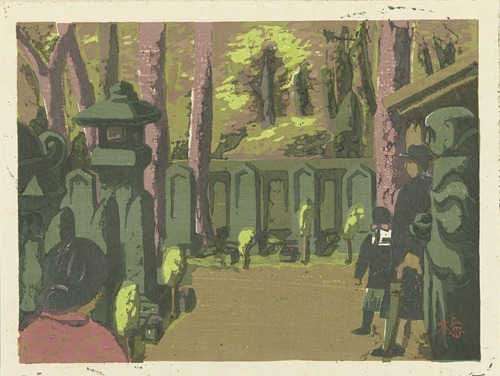Azechi Umetarô
Umetaro Azechi was a Japanese printmaker and mountain climber. He was known for his prints of mountains and people who live in them.
Azechi was born on December 28, 1902, to a poor farming family in what is now Uwajima, Ehime. He enrolled in an art correspondence course where he would send his work to Tokyo for critique. In 1920 he had the opportunity to move there, but returned home to Shikoku after the 1923 Great Kantō earthquake. He moved back to Tokyo in 1925, where he worked for a printing company.
Azechi's prints were noticed by Unichi Hiratsuka, who took him under his wing. He belonged to the Japan Print Association and the Kokugakai Arts Association. After his works were shown in some of their exhibitions, he quit his job and became a freelance artist. During this time, he was heavily influenced by Maegawa Sempan and Kōshirō Onchi.
During World War II, Azechi was sent to Manchuria. When he returned to Japan, he also immediately returned to making art.
Azechi's work was shown at the São Paulo Art Biennial in 1953. It was also shown at the Lugano International Print Biennial in 1956.
Azechi died on April 12, 1999. The Umetaro Azechi memorial museum opened in Uwajima in 2003.
